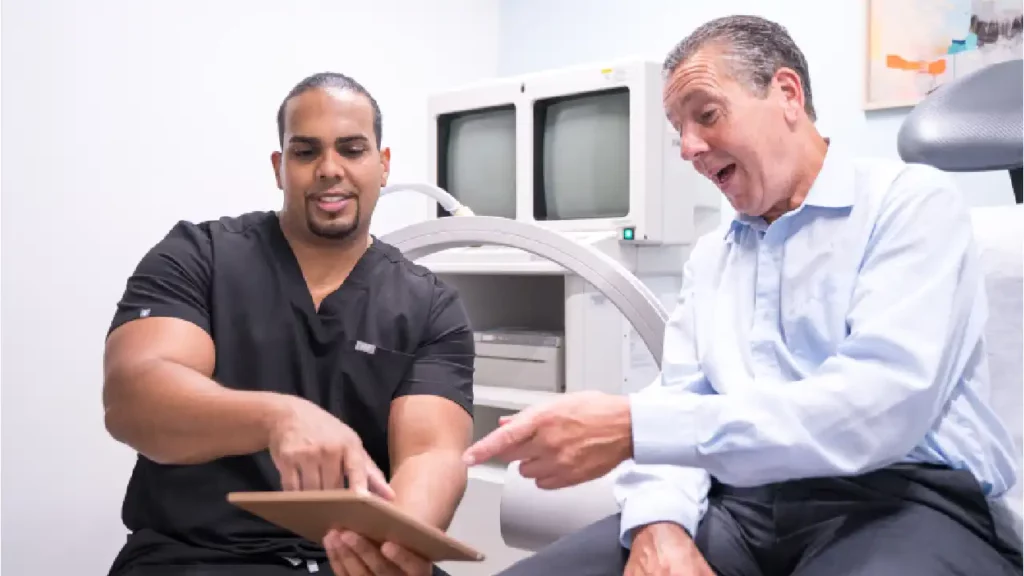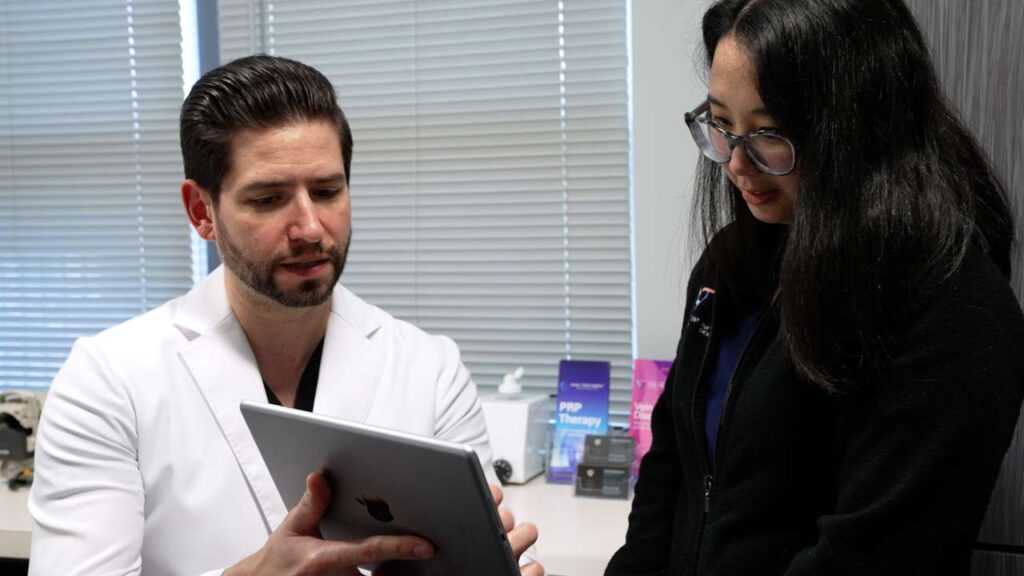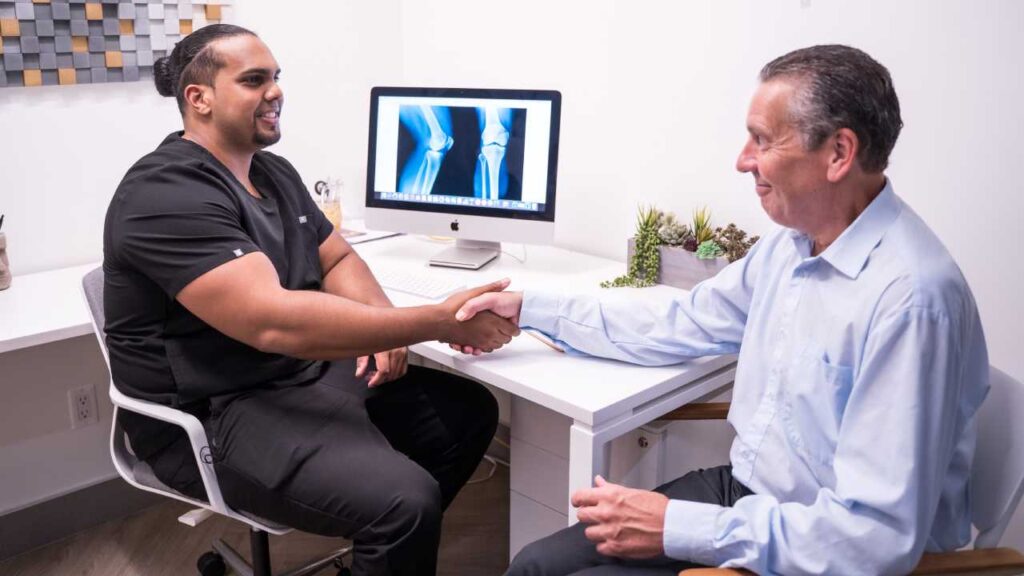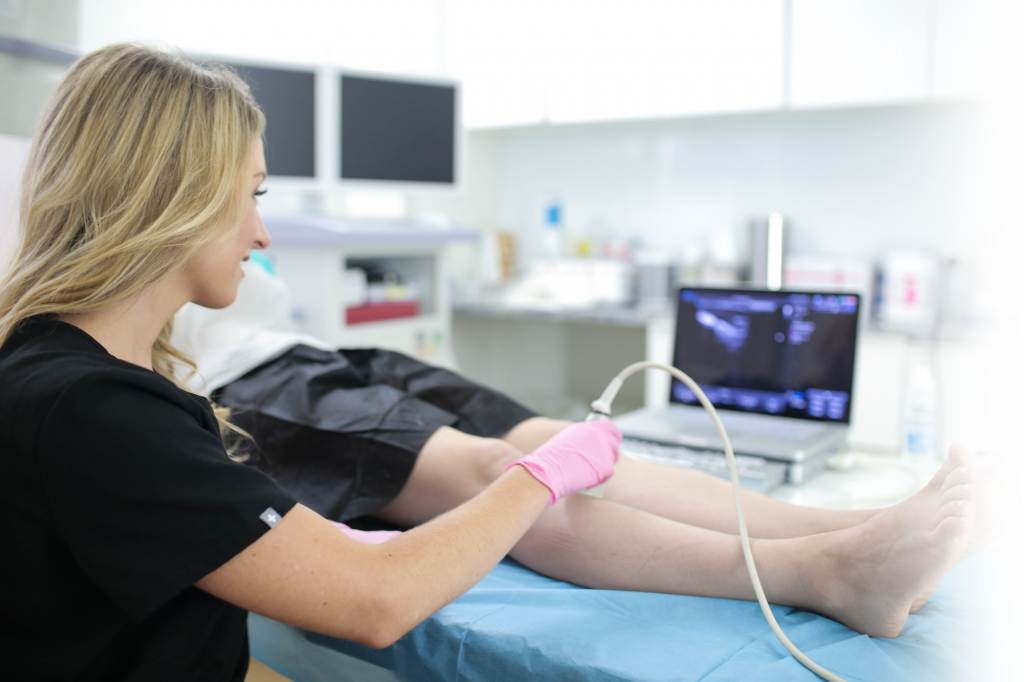#1. Accessible vein clinic in Paramus
The Spider Vein and Varicose Vein Clinic is an extremely accessible and reliable vein clinic in Paramus. Our vein clinic is located at 140 NJ-17 #103, Paramus, a short drive from the Paramus Park Mall, making it highly accessible for patients in Bergen County. You can also find our vein clinics in Clifton and Woodland Park, so we’re accessible to patients across New Jersey. You can schedule an appointment online or call +1 201-485-5020.
#2. Free insurance verification
The Spider Vein and Varicose Vein Clinic believes everyone should have access to affordable vein treatments, which is why we go above and beyond to help with insurance coverage. You can request free insurance verification before your appointment — the form is available online. Our insurance concierge will contact your insurance providers on your behalf, work out the terms and conditions, and help maximize insurance coverage for your minimally invasive spider vein and varicose vein treatment.
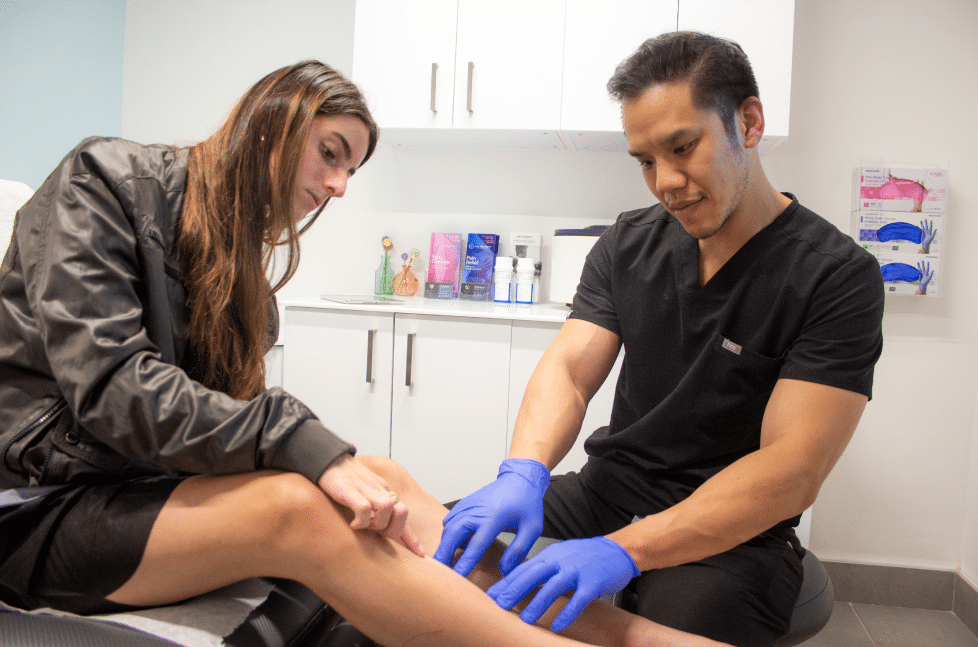
#3. Thorough physical examination
The Spider Vein and Varicose Vein Clinic performs thorough physical examinations during the initial consultation. The vein doctor will examine your leg veins to identify the signs of vein disease, such as spider veins and varicose veins. You’ll also be asked about your symptoms. Leg swelling, restless leg syndrome, frequent leg cramps, and leg pain are common signs and symptoms of chronic venous insufficiency, the root cause of most vein problems.
Our vein doctors always identify and treat chronic venous insufficiency before curating a treatment plan. Venous insufficiency is a medical condition wherein your vein valves collapse, and blood flows backward to accumulate in the leg veins. The continued accumulation of blood in leg veins leads to vascular dilation and the eventual formation of spider veins and varicose veins. Treating spider veins without addressing the root cause is pointless — the spider veins will inevitably return.
#4. Vascular imaging tests
After the initial consultation, the vein doctor performs vascular imaging tests to confirm chronic venous insufficiency. The vein doctor moves a handheld device over your legs to deploy ultrasound energy, which reveals the direction of blood flow in your leg veins. The vein doctor examines the direction of blood flow and looks for accumulated blood to determine if you have chronic venous insufficiency. The ultrasound diagnostic test is fairly simple and painless.
#5. Vein treatment planning
The vein doctor curates a personalized vein treatment plan after diagnosing vein disease. The vein treatment plan is designed according to your unique goals, requirements, symptoms, diagnostic results, medical history, and insurance coverage options. Furthermore, the vein doctor will discuss your vein treatment options, highlight the pros and cons of all procedures, and help you make an informed decision about your vein treatment.
#6. Minimally invasive treatments for chronic venous insufficiency
If you have chronic venous insufficiency, your vein treatment will start with radiofrequency ablation, endovenous laser ablation, or venaseal. These minimally invasive procedures use numerous techniques to collapse or seal the diseased vein, rerouting the accumulated blood into healthier veins. Once the diseased vein is removed, optimal blood circulation to the heart may resume again. However, different vein treatments achieve this goal using different techniques.
Radiofrequency ablation and endovenous laser ablation involve making small incisions on the skin’s surface to insert a catheter into the diseased vein. The catheter is eventually activated to generate thermal energy and laser energy, thereby collapsing the diseased vein to reroute blood into healthier leg veins. VenaSeal involves injecting a medical glue into the diseased vein to seal its walls shut, turning it into a hardened tissue eventually absorbed by the body.
#7. Cosmetic vein treatments for varicose veins and spider veins
After the primary vein treatment, or if you don’t have vein disease at all, the vein doctor may recommend ambulatory phlebectomy or sclerotherapy. These are minimally invasive vein treatments that remove the superficial varicose veins and spider veins from the skin’s surface. As such, these procedures improve your leg’s appearance without addressing the underlying root cause. That’s why these procedures must come after the primary vein treatment for chronic venous insufficiency.
During ambulatory phlebectomy, the vein doctor makes small incisions on the skin’s surface to physically extract and remove the superficial varicose veins. The incision marks gradually heal and fade away from the skin. During sclerotherapy, the vein doctor injects a medicine known as a sclerosant into the spider veins to fuse their walls, turning them into hardened scar tissues eventually absorbed by the body. The spider veins fade away within 3 weeks.
#8. A discussion of your aftercare guidelines
After the vein treatment, the vein doctor will discuss your aftercare guidelines. You should start walking immediately after vein treatment to facilitate optimal blood circulation to the heart. You will have to wear compression stockings for a few weeks to prevent blood from accumulating in your leg veins. And you can resume most of your daily activities and work immediately — most patients seek vein treatments during their work lunch break and resume working right after.
#9. Routine follow-up sessions
Some patients need to return for routine follow-up sessions or second appointments. This is especially true for patients with a large number of spider veins or varicose veins on the skin. If you have a lot of spider veins, you may need two sclerotherapy sessions for optimal results. The vein doctor will inform you about possible follow-up sessions before you leave the vein clinic. You can also stay in touch with the vein doctor over phone calls or texts.
